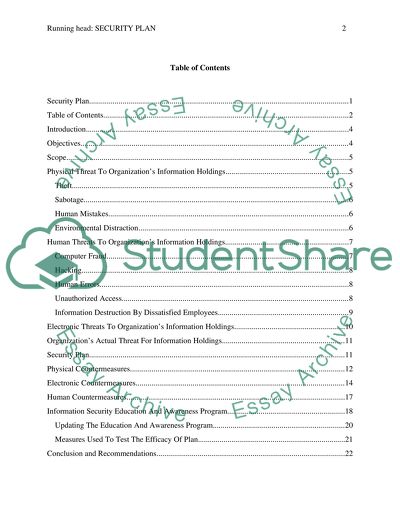Cite this document
(“Security Plan Essay Example | Topics and Well Written Essays - 4250 words”, n.d.)
Retrieved de https://studentshare.org/information-technology/1391552-security-plan
Retrieved de https://studentshare.org/information-technology/1391552-security-plan
(Security Plan Essay Example | Topics and Well Written Essays - 4250 Words)
https://studentshare.org/information-technology/1391552-security-plan.
https://studentshare.org/information-technology/1391552-security-plan.
“Security Plan Essay Example | Topics and Well Written Essays - 4250 Words”, n.d. https://studentshare.org/information-technology/1391552-security-plan.


